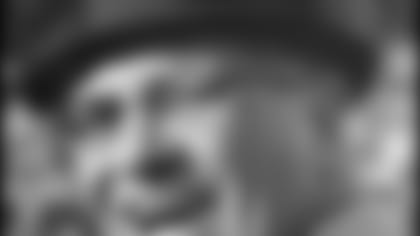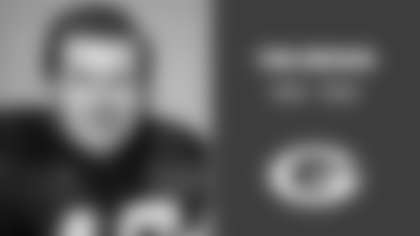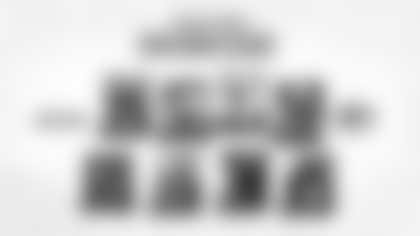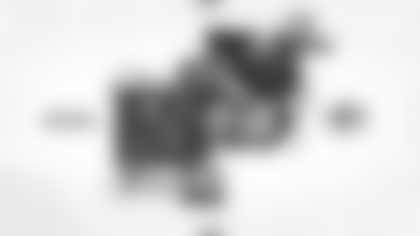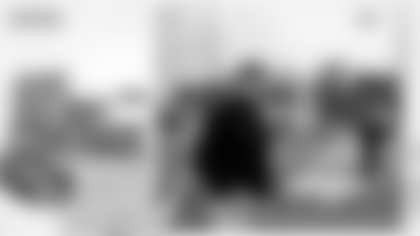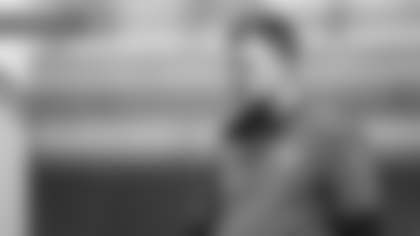Why was Super Bowl II the last game Vince Lombardi coached for the Packers? I always thought that Lombardi last coached the Packers and retired, but on "NFL Presents" it surprised me to see him coaching the Redskins the year after. Thank you Mr. Remmel. - Garrett (Long Beach, CA)
Garrett, Vince Lombardi stepped down as head coach of the Packers following the 1967 season and Green Bay's 33-14 victory over the Oakland Raiders in Super Bowl II, staying on at that point as general manager. He obviously was drained after driving the Packers to a third straight NFL championship - the first such parlay in league history under the playoff system. He also was convinced that the demands of the general manager's post would be escalating dramatically, requiring considerably more involvement for him and also was concerned over potential labor problems with the players that he saw on the horizon.
Vince later said that he knew the instant he stepped on the practice field at the opening of training camp in 1968 that he couldn't stay out of coaching. "But," he said, "I had given the job to Phil Bengtson (with a three-year contract) and there was no way I could take it away from him."
Less than six months later, Lombardi signed on with the Washington Redskins as vice president, general manager and head coach. He proceeded to bring the Redskins their first winning season in 14 years in the subsequent 1969 season (7-5-2). Lombardi did not have long to enjoy that success, or what it might have betokened for the future, becoming ill with colon cancer early the following year. Vince died Sept. 3, 1970, at the age of 57.
When the Packers chose Vince Lombardi as their new head coach in 1959, were there any other candidates for the job? How did they arrive at choosing Lombardi? - Jeffrey (San Antonio, TX)
Jeffrey, the year (1959) that Lombardi was hired, the Packers previously had interviewed Forrest Evashevski, then athletic director and head football coach at the University of Iowa. Evashevksi, however, reportedly was not interested and the Packers (President Dominic Olejniczca, among others) moved on.
As to how the organization arrived at hiring Lombardi, then largely obscure nationally, strong recommendations from George Halas and Paul Brown reportedly figured prominently in his hiring.
Dear Lee, While being the Packers all-time interception leader, why isn't Bobby Dillon in the Hall of Fame? He has more than Willie Wood and Herb Adderley, but yet they are both enshrined. Thank You for your time, and keep up the wonderful job. I really appreciate your insight and for taking the time to do this section of the web site! - John (Stanley, WI)
John, I don't know of a specific reason why Bobby Dillon has not made the Pro Football Hall of Fame. His statistics, as you suggest, should be more than sufficient to qualify him (52 career interceptions in 8 seasons).
In the absence of any "hard evidence," I would think it probably was the fact that during his 8-year career, the Packers were mired in mediocrity. They had only one winning season over that span - his last - in 1959, Vince Lombardi's first year as head coach and general manager.
During one of the games this season the television briefly aired a shot of a sign signifying City Stadium. I thought it had been torn down years ago. What can you tell me about City Stadium? Is it still around, or was this just a commemorative sign at the site where the stadium once was? - Marisa (Appleton, WI)
Marisa, "old" City Stadium, on Green Bay's East Side, is "still around," but it has been scaled back substantially from the structural and capacity perspective over the years.
It's maximum capacity was slightly over 25,000, but since the 1956 season, the Packers' 32nd and last in that structure, it has been cut back to approximately 7,000. The stadium is located right behind Green Bay East High School, whose football team still plays its home games there.
Lee: The Packer "G" is strikingly similar to that of the U of Georgia. Who had it on their helmet first? - Steve (Yuma, AZ)
Steve, the Packers were the first to display the "G" on their helmets, beginning in 1961, following its design by the late G.E. "Dad" Braisher, then the Packers' equipment manager. In the interim, the logo has been "borrowed" by several colleges and high schools, including Grambling State and the University of Georgia.
With the Green Bay Packers history and tradition, Lombardi, and Lambeau, how come people rarely mention the man who was co founder of the team, George Calhoun? I've been to Green Bay and Lambeau numerous times, but can't seem to recall anything dedicated to Calhoun. Is that true, and if so why is that? GO PACK GO! - Brad (Sault Ste. Marie, Ontario, Canada)
Having occupied the desk next to George Whitney Calhoun when he was a member of the editorial department at the Green Bay Press Gazette, I would say that unfortunately, he may have been a casualty of history. I say that because, through no fault of his own, he had very little involvement with the team after the mid-1940s, despite having been the person who called the very first meeting of the team in 1919 and as a result, is considered the team's co-founder.
Calhoun, a longtime bachelor, died in 1963 at the age of 73. He was inducted in the Packers Hall of Fame in 1978 and his plaque, designating him as the team's co-founder, is on display in the Hall's ultimate showplace, the Trophy Room. The grizzled, cigar-smoking Calhoun also is pictured elsewhere in the Hall.
Continuing an association with the team that is more than 55 years old, Lee Remmel was named the first official Team Historian of the Green Bay Packers in February 2004. The former *Green Bay Press-Gazette reporter and Packers public relations director, Remmel will write regular columns for Packers.com as part of his new assignment.
In addition to those articles, Remmel will answer fan questions in a monthly Q&A column. To submit a question to Remmel, click here. *


